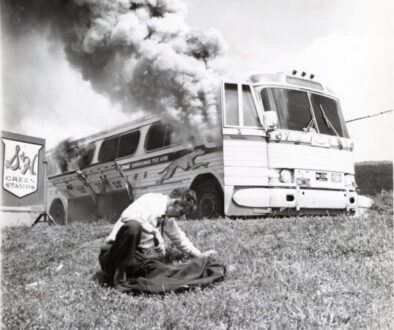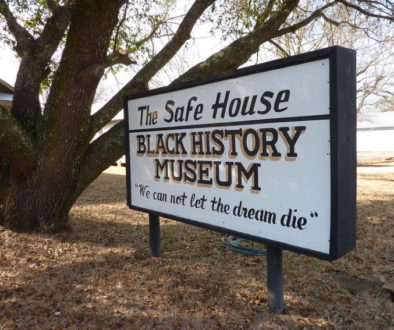
Tuskegee offers the one of the most inspiring sites on the civil rights trail, and one of the most appalling.
The historic college town’s home to the heroic Tuskegee Airmen museum, a National Historic Site at Moton Field airport, honoring the Red Tails, a group of African-American fighter pilots who battled the Nazis abroad and prejudice at home. But the city’s also where one of the darkest chapters of African-American history unfolded: the notorious Tuskegee Syphilis Study that let patients suffer in the name of medical research.
So get ready for an emotional visit to this city. It’s located just off Interstate 85, the main highway between Atlanta and Montgomery, Alabama, making it an easy stop on the well-worn civil rights trail between the two cities.
The Tuskegee Airmen owe their name and their training to an historic Alabama town long celebrated for African-American education. Tuskegee Institute, home to Booker T. Washington and George Washington Carver, was where the pilots lived and trained as part of a grudging war effort to develop a segregated corps of fighters.
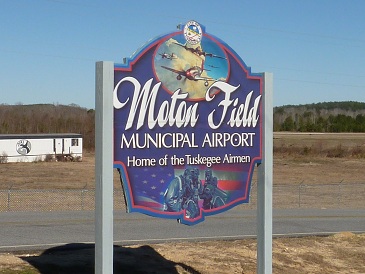
Today, the National Park Service has museums at historic Moton Field, where the pilots trained, and at what is now named Tuskegee University, a historic district in its own right and a thriving college campus. The pilots stayed in a dormitory, and underwent classroom instruction at the college. The sites are just a few miles apart and can both be visited in an afternoon.
| If you’re traveling to Atlanta, and eager to see Alabama’s most important civil rights sites, you can experience them all in a day in a unique package. A marathon 12-hour tour with a driver/guide visits the landmarks in Birmingham, Selma, Montgomery and Tuskegee. |
Tuskegee Airmen National Historic Site
Moton Field is now a quiet municipal airport. But 70 years ago, it was the center of a great experiment. This is where the U.S. military reluctantly agreed to train African-Americans to fly in combat.
The field was named for Robert Russa Moton, a former president of Tuskegee Institute. The native Virginian’s name also graces the civil rights museum in Farmville, Va.
Visitors enter historic Hanger 1 and are greeted by a canary yellow-winged Stearman PT-17 bi-plane, which was where the pilots honed their impressive skills.
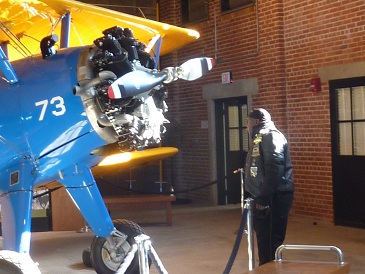
But these were impressive men to being with. The airmen were selected from an elite group: all had attended college, and they were expected to be commissioned as army officers.
Some indeed went on to notable military careers, including Benjamin O. Davis, the captain of the 99th Fighter Squadron (also known as the Airmen or Red Tails), who rose to become the first Black Air Force general. Another Airman Daniel “Chappie” James later became the first African American four-star general in the Air Force.
It’s all the more impressive because the general belief was that African-Americans weren’t fit to pilot an airplane. When the military eventually gave into public pressure from the NAACP to develop a segregated pilot training program, it was considered an experiment. The program started modestly with 13 candidates in July 1941. (Only five made it through the training).
“The general belief was that Blacks couldn’t fly.”
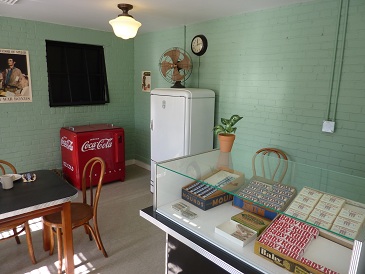
Tuskegee was a logical place to base the Airmen. Not only was home to a historic Black school, but it had been designated in 1939 as one of a few places in the country where African-Americans could be trained as civilian pilots.
Still, Tuskegee didn’t have funds to build adequate training facilities until a Black flight instructor took a special guest for a flight. First Lady Eleanor Roosevelt said she enjoyed her brief excursion over South Alabama, and with that endorsement the program began to grow.
Eventually 992 Army Air Corps pilots were trained here and the adjacent Tuskegee Army Airfield, but the Airmen title has come to include the 17,000 support personnel including mechanics, cooks, electricians and instructors who were also part of the endeavor.

The pilots indeed saw great success, shooting down dozen of enemy aircraft. Their squadrons built an excellent reputation as escorts, never losing a bomber. But the Airmen were not invincible – 66 died in combat or accidents.
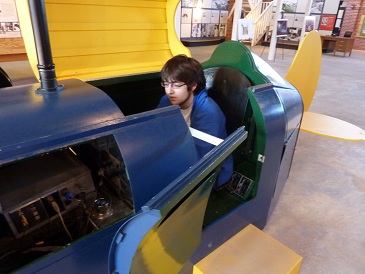
Perhaps part of their success can be traced to their training. The competition for pilot posts was grueling and hundreds of otherwise able candidates flunked out after the initial nine-week training because only a few slots were reserved for pilots.
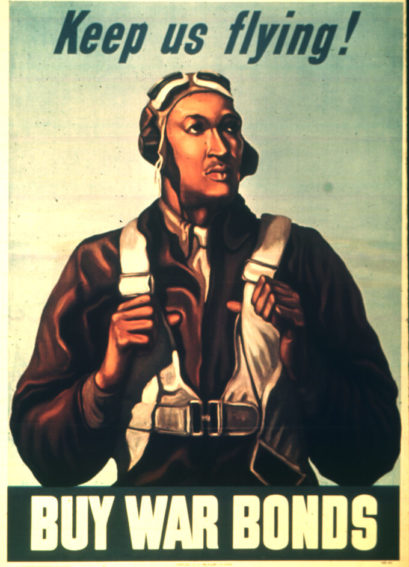
The Airmen museum, located in one of the original hangers, sends visitors back to the 1940s, with leather bomber jackets on coat stands and Life magazines sitting on desks. Make sure to dart outside to poke into the tea room.
Unlike the rest of Alabama, this small cafe was integrated, allowing white and Black personnel to share a hamburger and Coke between training flights.
Other exhibits include a military briefing room where the pilot candidates learned about the German army, studying their aircraft, ships and uniforms. In an interactive area, guests can try their hand at folding a parachute, another crucial part of the military operation.
Not all the Airmen saw action in war – and they weren’t universally accepted either. One unit, the 447th Bombardment Group, wasstationed in Freeman Fiel d in Indiana, were arrested after protesting their exclusion from the segregated officer’s club. That action helped lead President Harry S Truman to issue an order in 1948 officially desegregating the military.
Tuskegee Institute
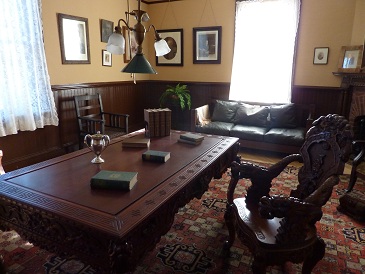
You can’t visit the Airmen site without visiting Tuskegee University. The busy college campus is why the training came to Alabama.
And in a larger sense, it also paved the way for the Airmen. Tuskegee was an independent institution that had proven that Blacks could thrive in an educational setting if given a chance. The school attracted truly the best and the brightest and could push a pilot training program even when many in the military establishment didn’t want it to succeed.
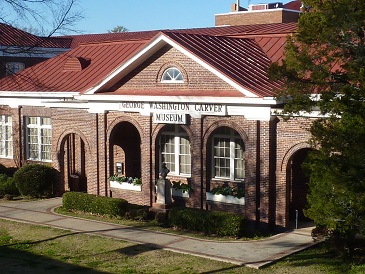
The National Park Service museum on campus includes exhibits from Carver’s laboratory and many experiments, which helped popularize the peanut and the sweet potato.
But try to catch a tour of Washington’s impressive Victorian home, The Oaks, available Thursday-Saturday at 10 and 11 a.m. and 1 and 3 p.m. It was built and staffed by students, and had electricity and indoor plumbing before many homes in Alabama.
A campus tour includes a visit to the chapel and an impressive stained-glass window inspired by Negro spirituals. It also passes the graves of Washington and Carver.
The legacy of the Airmen is still very much a part of the University. It is the only historically Black college to offer a degree in aerospace science engineering.
Tuskegee Syphilis Study and the Legacy Museum
But Tuskegee was also the site of an atrocity, the Tuskegee Syphilis Study, which gets thorough coverage at a museum on Tuskegee’s campus.
The story behind the exhibit is horrifying: Put simply, for decades medical workers withheld treatment from Black men with a disease, just to track how the illness raved their bodies. After the men died, their bodies were dissected to further document the damage.
The galleries are located in the Legacy Museum at the National Center for Bioethics in Research and Health Care, which was established after the U.S. government admitted its complicity in what was called the Untreated Syphilis Study in the Negro Male in Macon County, Alabama. The government also created a fund to compensate the victims and their families.
Located on the second floor, the exhibit focuses on the 40 year study of tracking untreated syphilis in approximately 600 Black men, from 1932-72. According the U.S. Centers for Disease Control, two thirds of the men had the disease, but were never informed.
The study was supposed to last for six months, but instead doctors monitored their health and deterioration over the decades. The disease begins with a sore, but can lead to blindness, mental illness and death. Those who were infected were simply told they had “bad blood.” Some of the victims had gotten the disease from their mothers at birth. A few were involved in building Moton Field, where the Tuskegee Airmen trained.
And although doctors knew by 1945 that penicillin could treat syphilis, it was never given to the subjects. The atrocity was revealed by an Associated Press report in 1972. aPresident Clinton formally apologized to the victims 25 years years later, and the last study participant died in 2002.
Another exhibit’s devoted to exhibit on Henrietta Lacks and HeLa cells.
This is another example of how medical institutions exploited a Black patient. Cancer cells taken from Lacks’ body during surgery at Johns Hopkins University in Baltimore without her knowledge or consent were used in a wide variety of medical experiments, and even helped developed the polio vaccine. Unlike other cells, Sacks’ were able to stay alive, a boon to researchers. Companies made millions of dollars from these so-called HeLa cells, although she had no knowledge and never received any compensation.
For more on the story, see the book The Immortal Life of Henrietta Lacks.
The museum can be hard to find, so ask at the university entrance. Hours are 10 a.m to 4 p.m., but the building’s not open when you arrive, you can call from the entrance. 334-727-8889 or 8888
Tuskegee Guidebook
The Tuskegee Airmen National Historic Site is open daily from 9 a.m. to 4 p.m. It’s about 40 miles east of Montgomery, easily accessible from Interstate 85, which connects with Atlanta.
Dining
Dorothy’s Located on campus at the Kellogg Center, you’ll find a hearty buffet with Southern specialties.
Blue Seas 2 Classic soul food offerings for lunch and dinner.
Lodging
You can stay on campus at the Kellogg Hotel & Conference Center.
Hotels
Lodging can be tight here during special events and when the Alabama legislature’s in session.
Trilogy Hotel One of the city’s newest lodgings is one of its best. Located walking distance from downtown civil rights sites, the hotel offers comfortable room in beautifully restored warehouses. 108 Coosa Street, Montgomery, 334/440-3550.
Renaissance Montgomery It’s one of the city’s newest, busiest and biggest hotels, and most comfortable. Near the riverfront park and convention center, and walking distance to most sites. 201 Tallapoosa Street, Montgomery, 334/481-5000.
Red Bluff Cottage Bed and Breakfast For real Southern hospitality, try something homier. This five bedroom B&B features antiques and wireless Internet. 551 Clay Street, Montgomery, 334/264-0056.
Dwella at Kress on Dexter A newly opened condo hotel within walking distance of the major civil rights sites.
Literature lovers, English majors and fans of The Great Gatsby can sleep in the former home of author F. Scott Fitzgerald. Two AirBnBs, located in the home Fitzgerald shared with his wife in 1931-32, include a record player with jazz albums and a sun porch overlooking the city’s Old Cloverdale neighborhood. Check out the Zelda Suite and the Scott Suite, which include a record player with jazz albums and a sun porch overlooking the city’s Old Cloverdale neighborhood.


